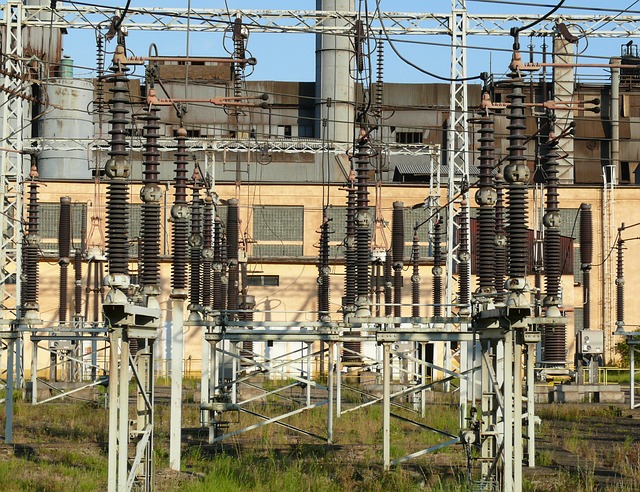Utility infrastructure design is a multifaceted process that involves meticulous planning and collaboration between engineers and city planners to create efficient, sustainable urban networks. Advanced mapping technologies enhance accuracy and enable early issue identification, reducing costs and disruptions. Integrating renewable energy sources and smart technology improves energy security and network resilience against natural disasters or cyberattacks. Comprehensive, future-oriented planning ensures scalability, adaptability, and continuous service delivery to critical facilities and residents.
In today’s digital era, understanding utility infrastructure design is crucial for fostering sustainable and resilient cities. This article explores the essential role engineers and city planners play in creating efficient network designs, leveraging advanced mapping technologies to enhance precision and visualization. We delve into best practices for implementing robust utility networks that support modern urban landscapes. By examining these key aspects, we aim to provide a comprehensive guide for professionals navigating the complex world of utility infrastructure design.
Understanding Utility Infrastructure Design: A Foundation for Modern Cities
Utility infrastructure design is a cornerstone in shaping modern cities, ensuring efficient services and sustainable growth. It involves meticulously planning and visualizing the complex network of underground utilities—water, sewage, gas, power lines, and telecommunications cables—that sustain urban environments. This design process requires engineers to collaborate closely with city planners, considering not just technical aspects but also aesthetic and environmental factors.
A well-designed utility infrastructure offers numerous benefits. It enhances safety by reducing the risk of accidents related to underground utilities, streamlines maintenance operations, and facilitates future expansions. Moreover, it promotes cost-effectiveness through optimized space utilization and reduces disruptions during construction or repairs, thereby minimizing urban congestion and environmental impact.
The Role of Engineers and City Planners in Efficient Network Creation
Engineers and city planners play a pivotal role in creating efficient network designs, particularly in the context of utility infrastructure. They are responsible for orchestrating the intricate dance of various utilities—from water and electricity to telecommunications—to ensure seamless integration within urban landscapes. By leveraging their expertise in civil engineering, urban planning, and technology, these professionals can optimize resource allocation, minimize disruptions during installation, and enhance the longevity of critical infrastructure.
In the planning phase, engineers conduct thorough assessments to identify existing utility networks and potential challenges. City planners, on the other hand, consider population growth, land use patterns, and environmental factors to predict future demands. This collaborative effort ensures that new or upgraded networks are designed with scalability in mind, adaptable to changing city needs without compromising efficiency or reliability.
Advanced Mapping Technologies: Enhancing Precision and Visualization
Advanced mapping technologies have revolutionized the way engineers and city planners approach utility infrastructure design. Tools like GPS, LiDAR, and drone-based mapping provide unprecedented precision and detail, enabling professionals to create highly accurate 3D models of underground networks. This level of visualization is instrumental in identifying potential issues before construction begins, thereby reducing costs and minimizing disruptions.
These technologies offer not just enhanced accuracy but also a holistic view of the landscape. By integrating data from various sources, including existing maps, sensor feeds, and field observations, engineers can make informed decisions about where to optimize utility placement, upgrade aging infrastructure, or expand network coverage. Such comprehensive insights are crucial for sustainable urban development and ensuring robust, future-proofed utility systems.
Best Practices for Implementing Sustainable and Resilient Utility Networks
Implementing sustainable and resilient utility networks is paramount for modern cities, ensuring reliable services while minimizing environmental impact. Best practices in utility infrastructure design emphasize integrated planning that considers future growth and changing climate conditions. This involves utilizing advanced modeling tools to predict demand patterns, allowing engineers to optimize network layout and resource allocation efficiently. By incorporating renewable energy sources like solar and wind power into the mix, cities can reduce carbon footprints and enhance energy security.
Moreover, prioritizing smart technology integration enables real-time monitoring and control of utility systems. Smart meters and sensors provide valuable data on consumption patterns and network performance, facilitating proactive maintenance and reducing downtime. Network redundancy and diverse supply routes also bolster resilience against natural disasters or cyberattacks, ensuring continuous service delivery to critical facilities and residents alike.
In today’s rapidly evolving urban landscape, effective utility infrastructure design is paramount for fostering sustainable and resilient cities. By collaborating closely with engineers and city planners, we can create efficient network designs that leverage advanced mapping technologies to enhance precision and visualization. Following best practices ensures these networks are not only functional but also future-proof, ensuring our communities thrive amidst changing conditions. Embracing these strategies is a step towards building modern, smart cities that stand the test of time.
